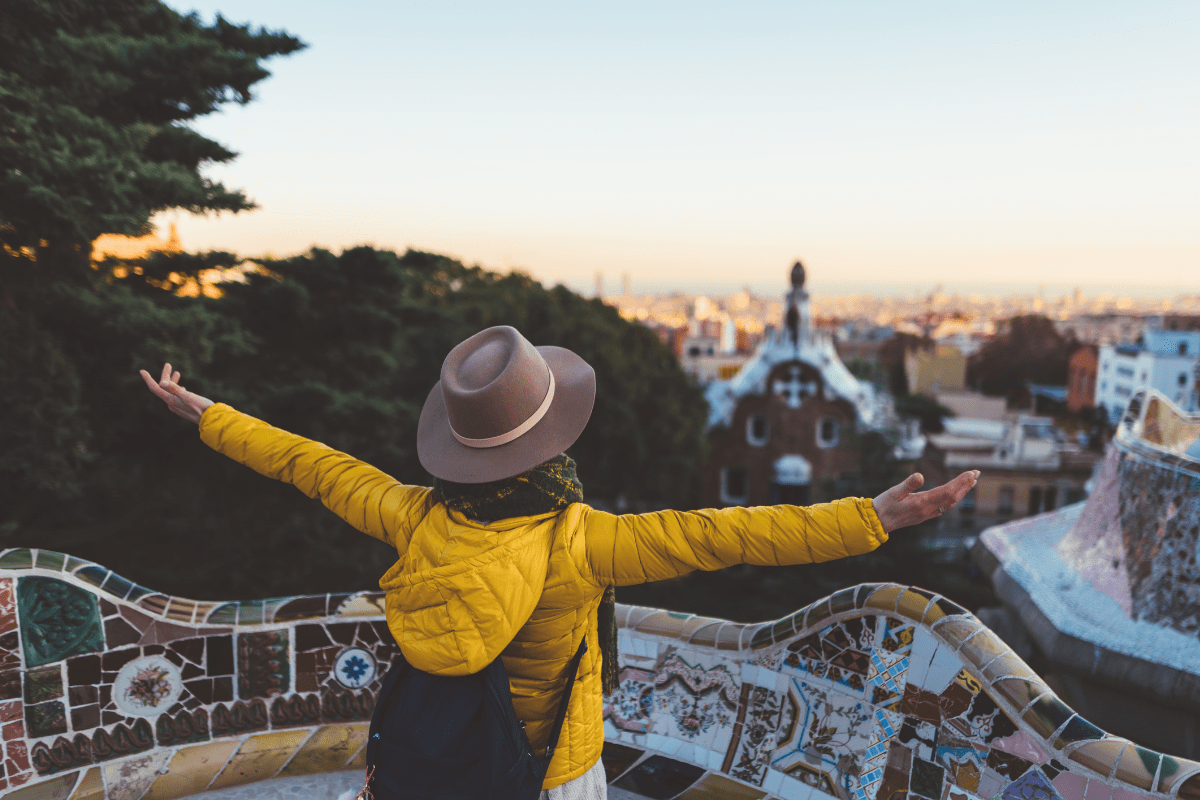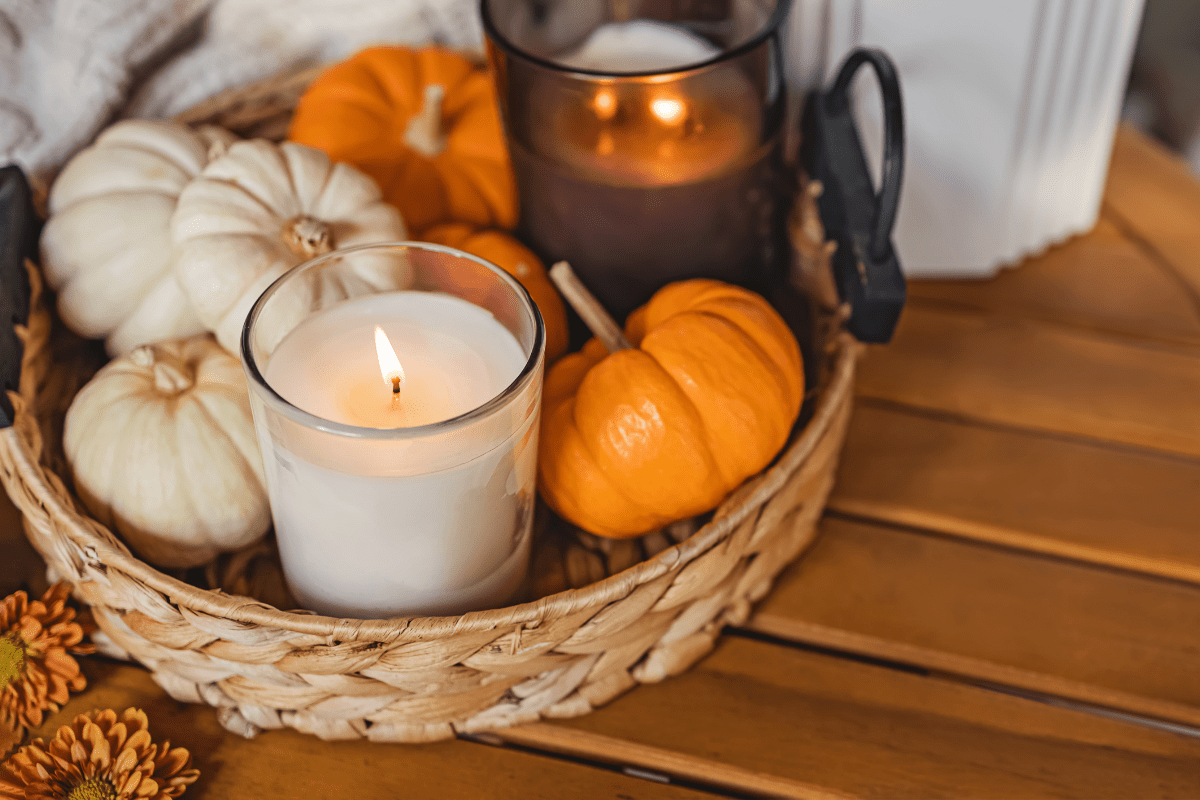Solo travel after 50 isn't just possible… it's having a serious moment. With women over 50 projected to spend $519 billion on travel by 2035, the travel industry is finally waking up to what we've known all along: we're ready for adventure.
Building confidence before you book that ticket
Let's be honest about the elephant in the room. The statistics are sobering: 65% of women who haven't traveled solo cite fear of safety as their primary reason for staying home. Even among experienced solo travelers, 64% still worry about their safety. But here's the thing… fear often shrinks with experience.
Starting small is your secret weapon. You don't need to book a month-long trek through Nepal for your first solo adventure. Try a weekend getaway to a nearby city first, or a short trip to somewhere you've always wanted to explore but never quite made it. Think of it as training wheels for your confidence.
Consider joining online communities for solo female travelers before you go. The support and practical advice from women who've been there can be invaluable. Facebook groups, forums, and sites like JourneyWoman offer real-world wisdom from travelers who understand exactly what you're going through.
Taking a self-defense class might sound dramatic, but it's actually one of the most confidence-boosting things you can do. You'll probably never need to use what you learn, but knowing you could makes everything else feel more manageable.
Pre-trip planning that actually matters
Smart preparation starts with the boring but essential stuff. If you're a US citizen, register with the State Department's STEP program so someone official knows where you are. Share your detailed itinerary with trusted friends or family… and actually keep it updated when your plans inevitably change.
Make copies of everything important: passport, driver's license, insurance cards, prescriptions. Store them in the cloud, email them to yourself, and keep physical copies separate from the originals. Yes, it feels like overkill until you're standing in a foreign embassy trying to prove you exist.
Research isn't just about finding the best restaurants (though that's fun too). Look up local emergency numbers, find the nearest embassy or consulate, and learn a few key phrases in the local language. "Help," "police," and "I need a doctor" are surprisingly useful to know, even if you never need them.
Download offline maps before you leave. Your phone will die at the worst possible moment… it's practically a law of travel physics. Having a backup navigation plan that doesn't require WiFi or data can save you from wandering around looking confused and tourist-like.
Money matters and senior savings
Here's where getting older finally pays off, literally. AARP membership costs just $15 a year and unlocks hotel discounts of 10-25%, car rental savings up to 35%, and various other travel perks for anyone 50 and up. Even if you're not quite ready to embrace your AARP card psychologically, your wallet will thank you.
Transportation discounts are everywhere once you know where to look. Amtrak offers 15% off their lowest fares for travelers 62 and older. The National Parks Senior Pass costs $80 for lifetime access to over 2,000 recreation sites. Do the math… it pays for itself after just a few visits.
Budget planning for solo travel requires some strategy since you can't split costs with a travel buddy. Research shows that 66% of solo female travelers worry most about higher costs due to traveling alone. Combat this by traveling during shoulder seasons, booking longer stays for weekly discounts, and choosing accommodations with kitchenettes so you can prepare some of your own meals.
Consider comprehensive travel insurance, especially for international trips. Yes, it adds to your upfront costs, but medical emergencies abroad can be financially devastating. Think of insurance as protection for both your health and your retirement savings.
Finding safe places to sleep and move around
Accommodation safety starts with location, location, location. Book properties in well-lit, populated areas near public transportation. Read recent reviews specifically from solo travelers, especially women. They'll tell you things the official description won't, like whether the neighborhood feels safe at night or if the front desk staff is helpful.
Choose rooms on floors 2-7 if possible. Ground floor rooms are easier targets for break-ins, while anything above the seventh floor is beyond the reach of fire department ladders. Look for accommodations with 24-hour front desk service, secure room locks, peepholes, and chain latches.
Consider alternatives to traditional hotels:
- Women-only hostels or guesthouses
- Homestays with verified female hosts
- Extended stay hotels with kitchenettes
- Boutique hotels with personalized service
- House-sitting through TrustedHousesitters
Transportation safety requires some advance planning. Research public transit options and safety ratings before you arrive. Download ride-sharing apps and set up accounts ahead of time. Learn basic transportation vocabulary in the local language, even if it's just "bus," "train," and "airport."
Avoid traveling alone at night when possible, but if you must, stick to well-lit, populated areas and trust your instincts. If something feels off, change your route or get to safety. Your gut feelings have kept you safe for 50+ years… they're still reliable travel advisors.
Personal safety strategies that work
Let's talk about the practical stuff that can make a real difference. Carry a door wedge and a portable door alarm. Safety experts recommend these simple tools because you never know when a door lock might be unreliable or when you need extra peace of mind in an unfamiliar place.
Money management is crucial for both financial and physical safety. Never put all your eggs in one basket… or all your cash in one pocket. Distribute money across multiple hiding spots: money belt, shoe, hidden pocket, bra. Keep emergency cash ($100 USD works almost everywhere) completely separate from your main funds.
Use RFID-blocking wallets to protect your credit cards and passport from electronic theft. Set up multiple bank accounts and notify all your financial institutions about your travel plans. Nothing ruins a trip faster than having your cards frozen because the bank thinks they're being used fraudulently.
Master confident body language. Walk with purpose, keep your shoulders back, and minimize obvious phone checking when you're out and about. You want to look like you know where you're going, even when you absolutely don't. Fake it till you make it applies to travel confidence too.
Essential safety items for your bag:
- Personal alarm device and whistle
- RFID-blocking wallet and passport holder
- Portable door alarm and wedge
- Copies of documents in multiple locations
- Emergency contact list in local language
Staying healthy far from home
Health preparation is non-negotiable when you're traveling solo. Pack a comprehensive first aid kit with basics like band-aids, antiseptic wipes, pain relievers, and any medications you might need. Bring extra prescription medications in their original bottles, plus copies of the prescriptions themselves.
Consider wearing a medical alert bracelet with key health information, especially if you have any serious conditions or allergies. Download medical translation apps before you go, and research local healthcare systems and your insurance coverage in your destination.
Pack probiotics and digestive enzymes to help your system adjust to new foods and water. Bring water purification tablets or a portable water filter for places where tap water isn't reliable. Your stomach will thank you for the extra precaution.
Choose accommodations with kitchenettes when possible. Being able to prepare some of your own meals gives you control over your diet, helps you save money, and provides a safe eating option when you're not feeling adventurous about local cuisine.
Plan for jet lag if you're crossing time zones. Melatonin supplements can help reset your sleep cycle, and light therapy (even just getting sunlight at the right times) makes a difference. Pack comfortable, supportive walking shoes and foot care items because you'll probably be doing more walking than usual.
Technology tools for the modern solo traveler
Your smartphone is your best travel companion, but only if it's properly equipped. Download translation apps like Google Translate (which works offline) and iTranslate before you leave. Navigation apps like Google Maps, Maps.me, and Citymapper can save you from getting hopelessly lost.
For transportation, download local apps for public transit, plus the usual suspects like Uber and Lyft. Rome2Rio is fantastic for figuring out complex transportation routes between cities or countries.
Stay connected with family and friends through WhatsApp, Skype, or Marco Polo. Consider safety apps like bSafe or Noonlight, which can alert emergency contacts if you don't check in as planned or if you feel unsafe.
Decide on your connectivity strategy before you leave: international phone plan, local SIM card, or pocket WiFi device. Each has pros and cons depending on your destination and usage needs. Don't forget portable chargers and universal adapters… dead phones are useless phones.
Meeting people and staying connected
One of the biggest fears about solo travel is loneliness, but it doesn't have to be isolating. Join organized activities like cooking classes, art workshops, or walking tours. These provide natural opportunities to meet people while having structured activities to fall back on if conversations don't flow naturally.
Use apps like Meetup or Eventbrite to find local events that match your interests. Stay in social accommodations like B&Bs or guesthouses where interaction with other guests is more natural than in big chain hotels.
Visit local markets, cafes, and community centers. These are great places to observe local life and sometimes strike up conversations with friendly locals or fellow travelers. Consider volunteer activities or cultural exchange programs if you're staying somewhere for an extended period.
Don't forget to maintain your relationships at home. Schedule regular video calls with family and friends, share your experiences through social media or a travel blog, and send postcards or small gifts from your travels. Staying connected to your support network back home makes solo travel feel less solitary.
When group tours make sense
Sometimes solo travel doesn't mean traveling completely alone. Women-only group tours are experiencing explosive growth, and for good reason. Gutsy Women Travel caters to 90% travelers age 50 and older with intimate group sizes of 8-16 people.
Road Scholar offers women-only trips with educational focus and expert instructors. These aren't your typical bus tours… they're experiential learning adventures designed for curious, active women.
For those who prefer mixed-gender groups, companies like Intrepid Travel offer small group tours with an average of 10 people, ages 18-70. Their culturally rich experiences with local guides provide authentic travel experiences without the stress of planning everything yourself.
Group tours can be particularly valuable for first-time solo travelers or when visiting destinations that feel challenging to navigate independently. You get the benefits of traveling with like-minded people while someone else handles the logistics.
Destination inspiration for every confidence level
Survey data from experienced women travelers identifies consistently "safer" destinations including the UK, Ireland, Canada, New Zealand, Iceland, and the Netherlands. These make excellent starting points for nervous first-time solo travelers.
Portugal deserves special mention as a solo travel gem. It's safe, affordable, has excellent infrastructure, and English is widely spoken. Japan offers incredible safety, efficient transportation, and a respectful culture that makes solo female travelers feel welcome.
For intermediate destinations, consider Morocco (with its growing solo female traveler community), Costa Rica (eco-tourism focused with good infrastructure), or Thailand (well-established backpacker routes and friendly locals).
The same survey identifies destinations requiring more preparation and cultural awareness, including India, Mexico, Egypt, and Turkey. These aren't off-limits… they just require more research, planning, and possibly guided tours for first-time visitors.
Packing smart for safety and comfort
Your packing list should prioritize safety, health, and comfort over fashion. Essential safety items include a door wedge, portable door alarm, personal alarm device, and whistle. Pack RFID-blocking accessories and keep copies of important documents in multiple locations.
Health essentials include a comprehensive first aid kit, extra prescription medications, probiotics, water purification tablets, sunscreen, and insect repellent. Don't forget comfortable walking shoes with good support… your feet will carry you through some amazing adventures.
Comfort items make the difference between surviving and thriving on your trip. Pack lightweight, quick-dry clothing, portable laundry detergent, a universal adapter with multiple USB ports, and a few small comfort items like your favorite tea or essential oils.
Remember that you can buy most things you forget, but having the essentials packed properly from the start makes your trip smoother and more enjoyable.
The adventure awaits
Solo travel after 50 isn't just about seeing new places… it's about discovering new parts of yourself. Yes, there are legitimate safety considerations and practical challenges, but they're all manageable with proper preparation and a healthy dose of common sense.
Statistics show that experience reduces fear, with worry levels dropping from 75% among women with fewer than five solo trips to 52% for those with more than 10 solo adventures under their belts. Every trip makes the next one easier.
You've spent decades taking care of others, managing households, building careers, and handling crises both big and small. Planning a solo trip and navigating foreign cities might feel daunting, but you already have most of the skills you need. Trust yourself, prepare thoughtfully, and embrace the freedom that comes with making every decision based solely on what you want to do.
The world is full of amazing experiences waiting for curious, adventurous women who refuse to let age or societal expectations limit their horizons. Your next great adventure is just a booking confirmation away.




